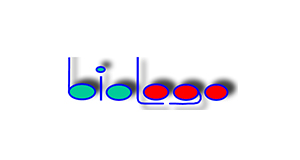HPV (Type 1, 6, 11, 16, 18, 31) Human Papilloma virus (Screening Antibody)
HPV (Type 1, 6, 11, 16, 18, 31) Human Papilloma virus (Screening Antibody), IgG, Clone: 1H8
Clone: 1H8
Background: This antibody has been used for screening of HPV infections in various tissues. If positive staining turnes up, the analysis should be followed by testing for HPV 16 and 18 reactivity using antibody HP305 and/or specific PCR analysis. Human Papilloma virus (HPV) is responsible for the development of type and tissue specific papilloma in the oral cavity and in the larynx. In the skin papilloma virus can cause different types of warts and in the ano-genital region it is associated with condyloma or carcinoma. HPV types 1, 6 and 11 usually are associated with benign transformations of the tissues, while e.g. HPV types 16, 18 and 31 seem to be responsible for the development of some carcinoma like cervical carcinoma. The role of HPV in non-melanoic tumours of the skin is under discussion. Papillomavirus Type 1, 6, 11, 16, 18, 31.
Positive Control: Infected cervical biopsy
Immunogen: SDS-disrupted bovine papillomavirus type 1
Purification Method: Antibody solution in stabilizing phosphate buffer pH 7.3. Contains 0.09 % sodium azide**. The volume is sufficient for at least 30 immunohistochemical tests (100 µl working solution / test). Use appropriate antibody diluent e.g. BIOLOGO Art. No. PU002 if required.
References: 1. Cowsert et al. (1987) J. Natl. Cancer Inst. 79; 1053-1057. 2. Banks L.J. (1987) J. Gen. Virol. 68; 1351-1355. 3. Cason J., Patel D., Naylor J., et al. (1989) Identification of immunogenic regions of the major coat protein of human papillomavirus type 16 that contain type-restricted epitopes. J. General Virol. 70; 2973-2987. 4. Shepherd P.S., Lunny D., Brooks R., et al. (1992) The detection of human papilloma viruses in cervical biopsies by immunohistochemistry and in situ hybridization. Scand. J. Immunol. 36(11); 69-74.
Caution: *These antibodies are intended for in vitro research use only. They must not be used for clinical diagnostics and not for in vivo experiments in humans or animals. ** The preservative sodium azide is known to be poisonous and potentially hazardous to health. It should be handled only by trained staff. Despite of the product's low azide concentration it must be handled with care. Dispose according to regional rules!
Background: This antibody has been used for screening of HPV infections in various tissues. If positive staining turnes up, the analysis should be followed by testing for HPV 16 and 18 reactivity using antibody HP305 and/or specific PCR analysis. Human Papilloma virus (HPV) is responsible for the development of type and tissue specific papilloma in the oral cavity and in the larynx. In the skin papilloma virus can cause different types of warts and in the ano-genital region it is associated with condyloma or carcinoma. HPV types 1, 6 and 11 usually are associated with benign transformations of the tissues, while e.g. HPV types 16, 18 and 31 seem to be responsible for the development of some carcinoma like cervical carcinoma. The role of HPV in non-melanoic tumours of the skin is under discussion. Papillomavirus Type 1, 6, 11, 16, 18, 31.
Positive Control: Infected cervical biopsy
Immunogen: SDS-disrupted bovine papillomavirus type 1
Purification Method: Antibody solution in stabilizing phosphate buffer pH 7.3. Contains 0.09 % sodium azide**. The volume is sufficient for at least 30 immunohistochemical tests (100 µl working solution / test). Use appropriate antibody diluent e.g. BIOLOGO Art. No. PU002 if required.
References: 1. Cowsert et al. (1987) J. Natl. Cancer Inst. 79; 1053-1057. 2. Banks L.J. (1987) J. Gen. Virol. 68; 1351-1355. 3. Cason J., Patel D., Naylor J., et al. (1989) Identification of immunogenic regions of the major coat protein of human papillomavirus type 16 that contain type-restricted epitopes. J. General Virol. 70; 2973-2987. 4. Shepherd P.S., Lunny D., Brooks R., et al. (1992) The detection of human papilloma viruses in cervical biopsies by immunohistochemistry and in situ hybridization. Scand. J. Immunol. 36(11); 69-74.
Caution: *These antibodies are intended for in vitro research use only. They must not be used for clinical diagnostics and not for in vivo experiments in humans or animals. ** The preservative sodium azide is known to be poisonous and potentially hazardous to health. It should be handled only by trained staff. Despite of the product's low azide concentration it must be handled with care. Dispose according to regional rules!

 Deutsch
Deutsch







